Increasing Student Awareness of Coral Reef Conservation with Inquiry and Participatory Education
By Zovig Minassian
Imagine traveling with your students to a coral reef to investigate the effects of climate change, then returning equipped with expertise in coral conservation. How can we teach youth to care about this important asset that resides far away from their urban life? Kids are passionate about issues that affect them; so let us start there.
Why protect coral ecosystems? Coral reefs are indicators of ecosystem health, provide food and income to coastal communities through fishing and tourism, 1 and act as shoreline protection from storms. 2 Coral bleaching is becoming increasingly common mostly due to human activities, such as pollution and climate change. 3 Urban runoff from rivers can contaminate coral ecosystems. 4 Maintaining the quality of water in a city could help protect marine life. The following ecology unit, based on the 5E Instructional Model, focuses on local water quality and coral reef conservation while addressing the needs of our community.
ENGAGE
Introduce the phenomenon of coral bleaching by providing students with images of coral reefs before and after bleaching events and ask small groups to discuss and record their observations and questions. Show scenes from the documentary “Chasing Coral” for added impact. Provide students with a water cycle diagram and have groups discuss how events in a city (urban runoff, storm drains) can affect life in the ocean. I use a real-life example from my community. Glendale, CA, plans to convert the Verdugo Wash, a cemented tributary of the LA River, into a greenway (Figure 1). I show a map and satellite images of the city to help kids recognize the location of the wash. We discuss the source and destination of rivers, the biodiversity they support, and why a greenway would benefit humans and wildlife. Pictures of the Los Angeles River revitalization project demonstrate how a greenway for walking, biking, and kayaking can maintain the river ecosystem.
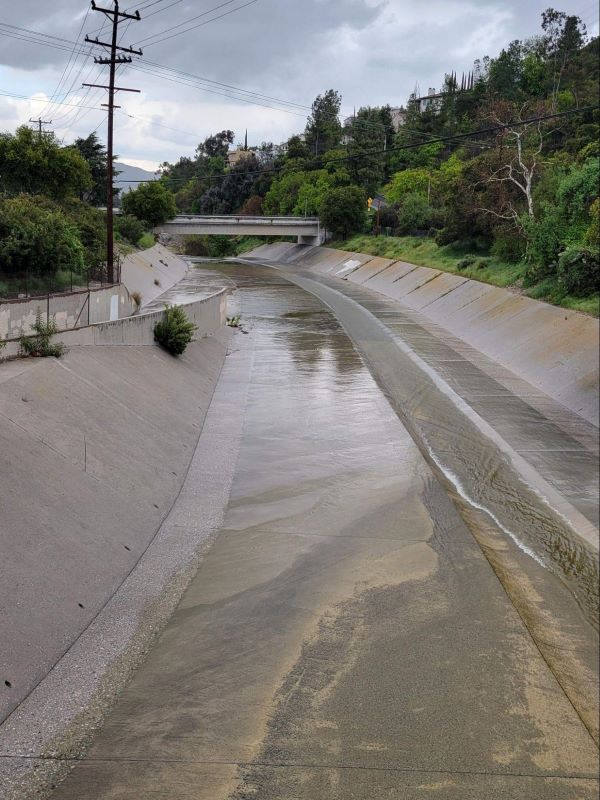

Figure 1. The Verdugo Wash, a cemented tributary of the Los Angeles River passing through Glendale, CA, with signs discouraging the dumping of trash and pollutants in the river
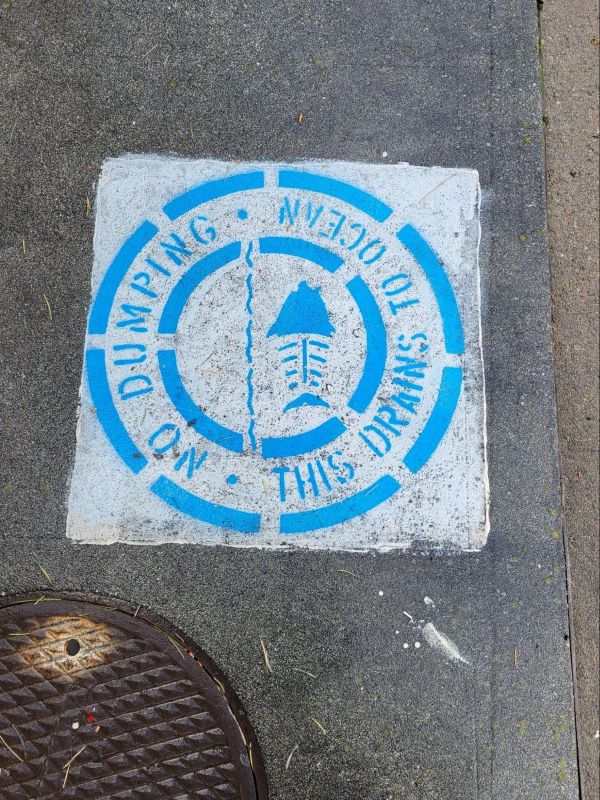
EXPLORE/EXPLAIN
Inquiry-based lessons generate interest, allowing students to formulate and answer their own questions. 5 Take students outdoors for a quiet ten-minute nature observation. They may share their observations in small groups and generate questions. The focus can be a big idea, such as the presence of different types of insects (biodiversity focus) or the amount of litter (pollution focus). Using their observations, teach how to make comparative questions (for example, the number of insects in damp versus dry spots) and introduce data collection techniques, such as quadrats. Ask groups to generate comparative questions to investigate. They may collect data that address their questions in a nearby park or green area. Have them analyze the data and present their conclusions.
ELABORATE
To bring attention to water systems in the community, have students list popular areas near a pond, lake, or river. Within the Los Angeles River watershed, storm drains channel water into the LA River, which joins the Pacific Ocean in Long Beach. Trash in the river can end up at the beach, especially after a storm. The Trash Interceptor helps prevent that (Figure 2). Discuss how our impact on this network of waterways can be far-reaching and affect ocean life. Over the next two weeks, groups of students can explore areas in their neighborhood by surveying the cleanliness of the water, bird count, or the presence of trash cans, post their results on a shared Google Sheet, and use Google Earth to make a map of their community with pins indicating each of the factors investigated.
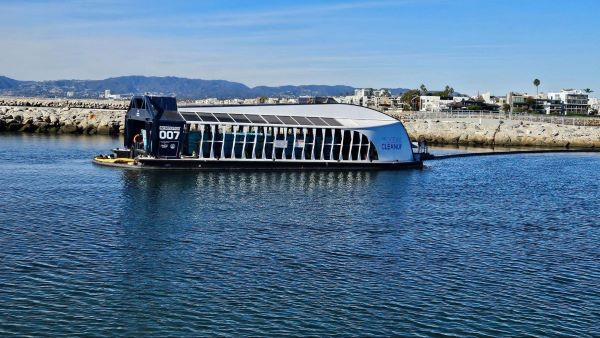
Figure 2. The Trash Interceptor at Ballona Creek joining the Pacific Ocean (left) and debris accumulated down the LA River and onto the beach in Long Beach, CA, after a major storm (right)
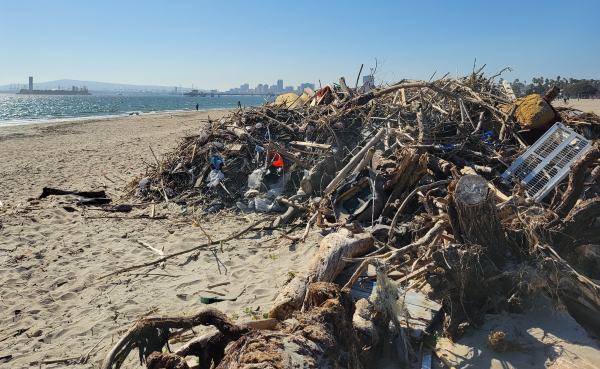
EVALUATE
Provide additional resources to connect local actions on waterways to the impact on the marine ecosystem; large-scale impacts can include agricultural waste, lawn fertilizer, and motor oil There are also personal ones such as the effects of sunscreen on coral reefs. I invite Tree People/Generation Earth to teach about pollution effects on watersheds and conduct a campus water audit. Additional resources for generating inquiry questions include the website I created, Heal The Bay, Cabrillo Marine Aquarium, Ecology Project International, and ECOS; the last is a program I witnessed in the Galapagos Islands and inspired me with my ultimate goal: empowering students to champion environmental sustainability within their communities. Glendale’s proposed greenway conversion plan provides a local venue to apply students’ critical thinking skills. Working in groups, they take on the role of researchers dedicated to river health, investigating native wildlife, learning how to reduce pollution in the water, and discovering what clean water means to them personally. Research shows that friends influence each others’ behaviors (social clustering), and this social influence is stronger than that of parents and teachers. (6)
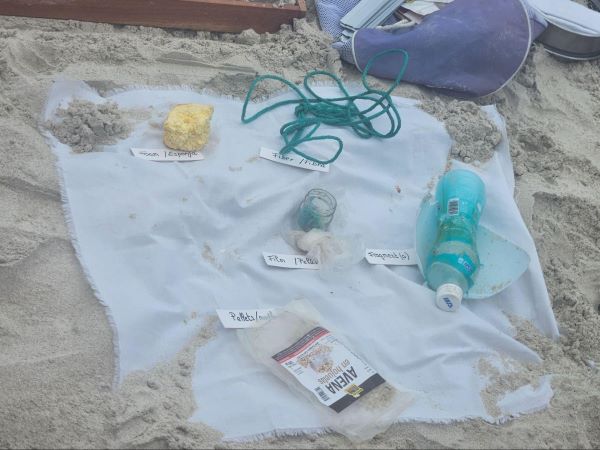
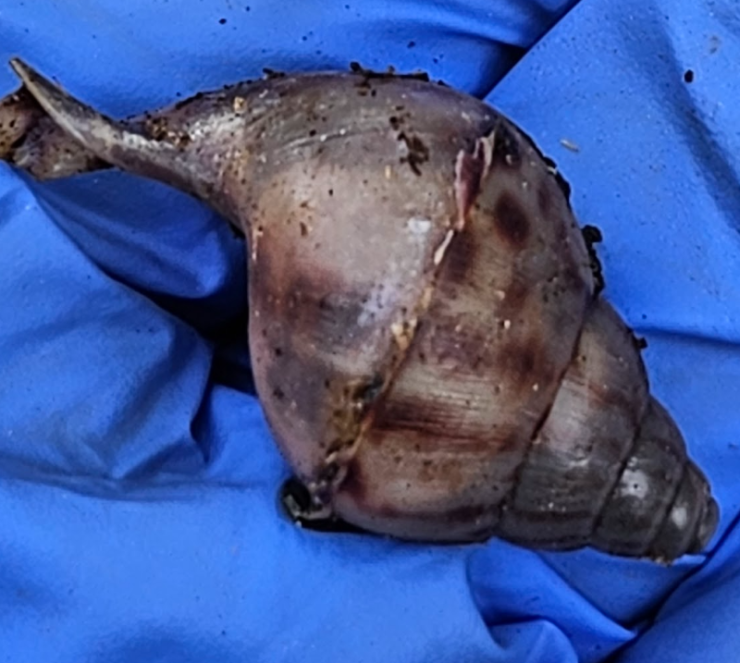
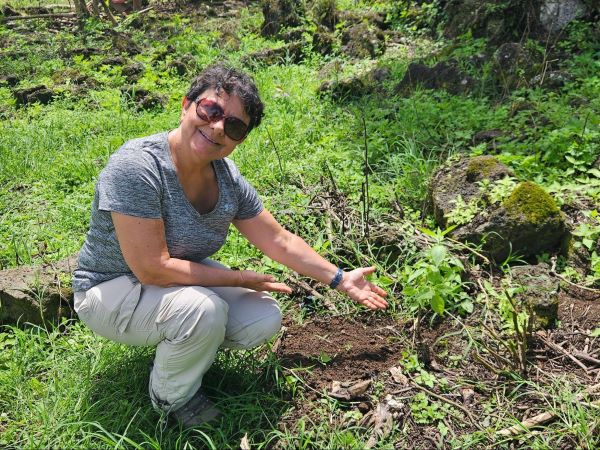
Figure 3. From left to right: microplastics survey at Tortuga Bay, removing invasive giant African snails, and planting Escalesia trees in the highlands of Santa Cruz, Galapagos Islands, Ecuador
Participatory education gives students a voice to share concerns that matter to them. 7 Lessons learned can lead to real-world applications (Figure 3). Whether it is concern about the greenway or other water-related issues, such as proper disposal of waste and pollution, students can share their water survey results with their school PTA or the city council by making infographics (free tool and example) or capturing images of pollution impacts in an art exhibit. These can serve as culminating assessments for the ecology unit. Taking an active role in society empowers youth to make positive changes and engages others, magnifying the conservation impact further.
This unit plan satisfies the following NGSS standards: High School Performance Expectations HS-ESS3-1 and HS-ESS3-4 and Middle School Performance Expectations MS-LS2-1 and MS-LS2-4.

References
1United Nations. (n.d.). Impacts of climate change on coral reefs and the Marine Environment. United Nations. Retrieved October 29, 2021, from https://www.un.org/en/chronicle/article/impacts-climate-change-coral-reefs-and-marine-environment.
2Elliff, C. I., & Silva, I. R. (2017). Coral reefs as the first line of Defense: Shoreline Protection in face of climate change. Marine Environmental Research, 127, 148–154. https://doi.org/10.1016/j.marenvres.2017.03.007
3Hoegh-Guldberg, O., Poloczanska, E. S., Skirving, W., & Dove, S. (2017). Coral reef ecosystems under climate change and ocean acidification. Frontiers in Marine Science, 4. https://doi.org/10.3389/fmars.2017.00158
4Rogowski, P. A., Terrill, E., Schiff, K., & Kim, S. Y. (2015). An assessment of the transport of Southern California Stormwater Ocean discharges. Marine Pollution Bulletin, 90(1-2), 135–142.
5Llewellyn, D. (2014). Inquire within: Implementing inquiry- and argument-based science standards in grades 3-8. Corwin Press.
6Long, J., Harré, N., & Atkinson, Q. D. (2013). Understanding change in recycling and littering behavior across a school social network. American Journal of Community Psychology, 53(3-4), 462-474. doi:10.1007/s10464-013-9613-3
7Hart, R. A. (1997). children’s participation. the theory and practice of involving young citizens in Community Development and environmental care. New York and London UNICEF. - references - scientific research publishing. (n.d.). https://www.scirp.org/(S(351jmbntvnsjt1aadkposzje))/reference/ReferencesPapers.aspx?ReferenceID=1370465







